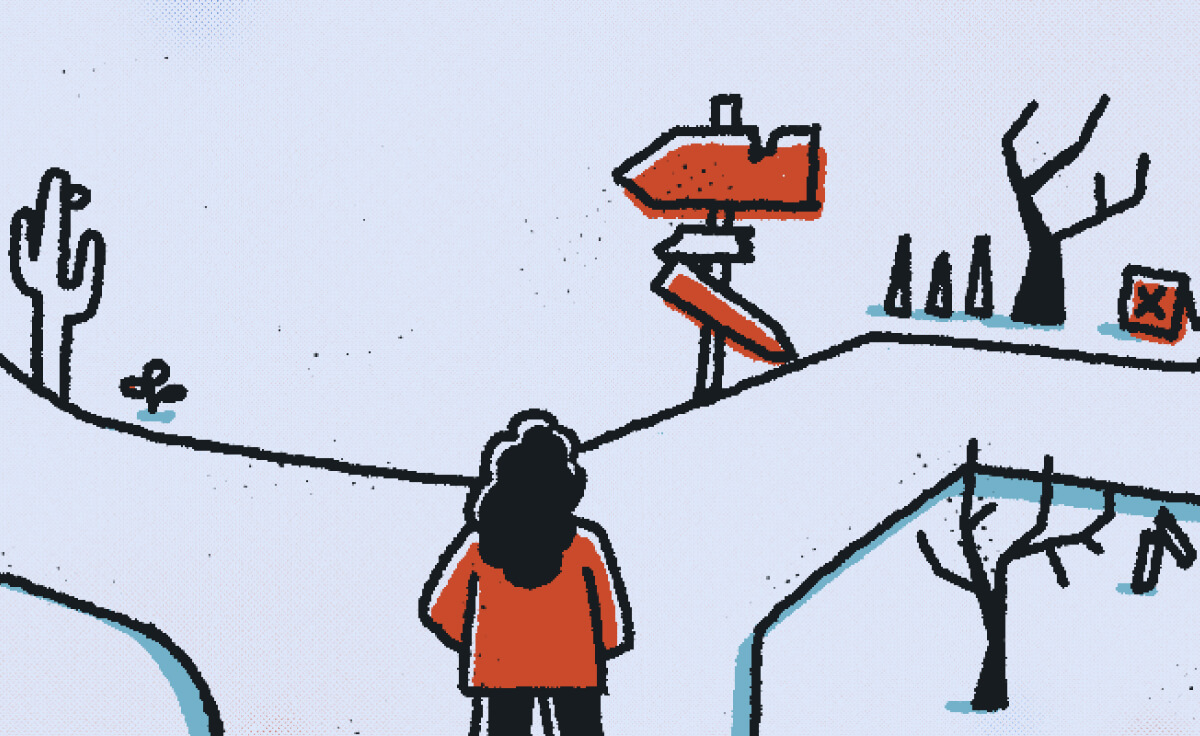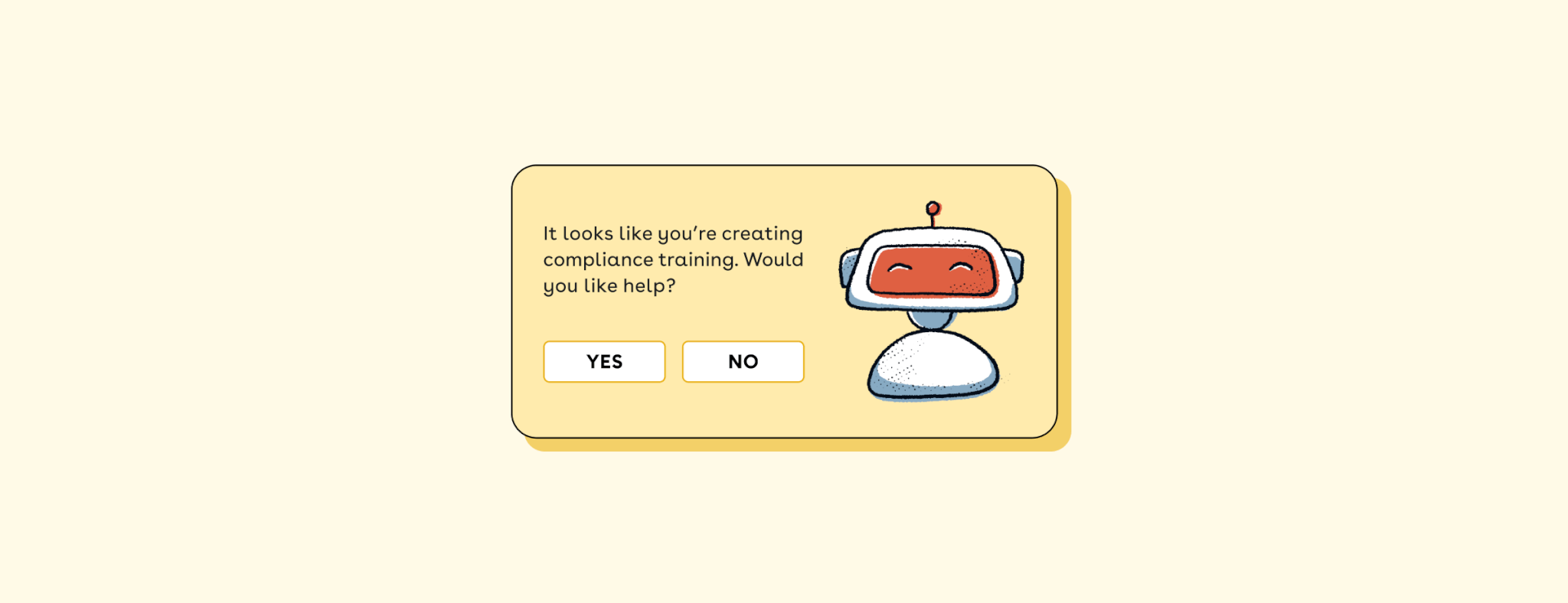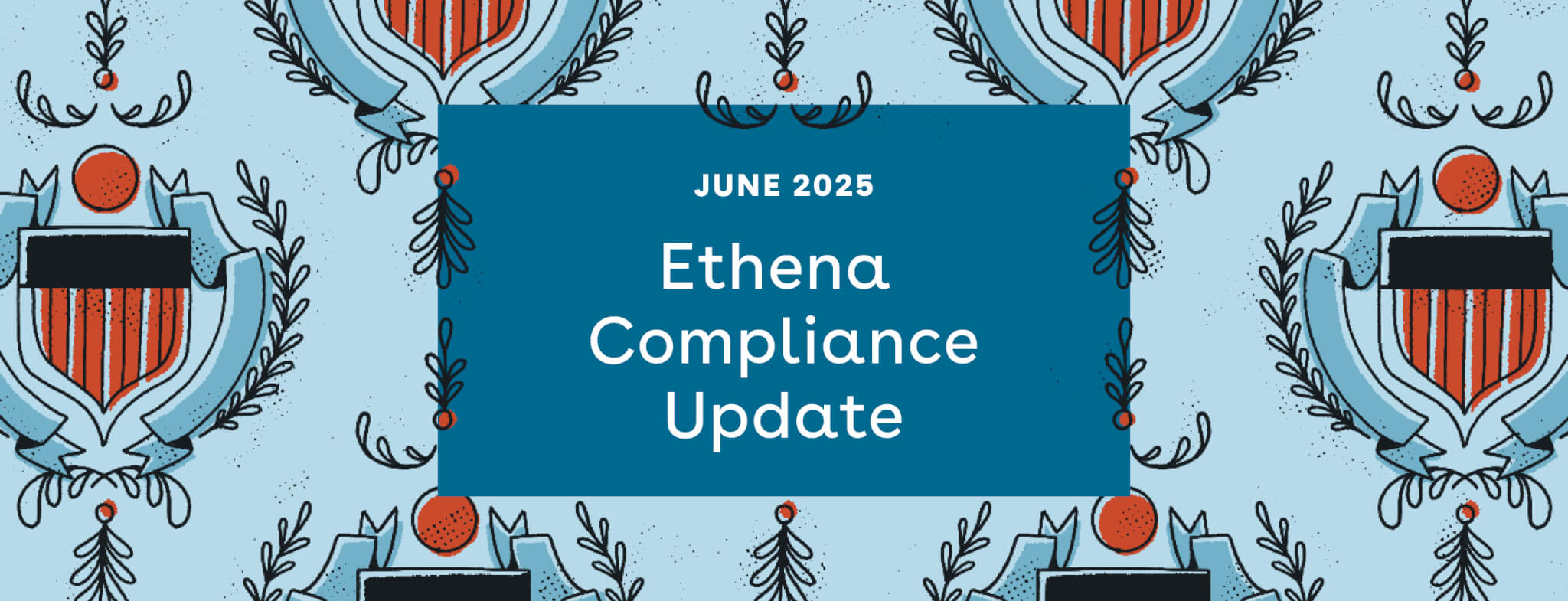In this article
What do workplace microaggressions look like?
What is microaggression training?
How do I know if I’m experiencing a microaggression?
What goes into workplace microaggression training?
What makes Ethena’s workplace microaggression training stand out?
Over the past few years, microaggressions have become a hot topic in and out of the workplace. From TED Talks to polarizing articles, it seems everyone has an opinion about what is and isn’t appropriate in our businesses, communities, and culture.
As happens during any period of change, discussing topics that challenge our idea of right and wrong (and precisely where we sit on that scale) can make some people want to back up slowly with their hands where everyone can see them. At Ethena, we encourage learners to lean into topics that may have previously been seen as best avoided. We quote Brené Brown when we say, “You don’t have to be right; you have to get it right.”
Like 80s prom dresses and that period when restaurants were putting bacon on everything, imperfections, and mistakes are inherent to the human experience. At Ethena, we believe that to make real change in the workplace, we need to shift the education from “good” and ”bad” behavior to lessons that empower teams to operate from a place of compassion, curiosity, and understanding.

What do workplace microaggressions look like?
As the name implies, microaggressions can be hard to catch – mainly because we all carry biases – and because they often appear “so small.” However, in 2023 we know that the “sticks and stones” mantra our parents told us when we were kids, though well-meaning, is not very helpful when real-life feelings get involved.
Microaggressions are the small, everyday questions, comments, assumptions, and backhanded compliments that are hostile or offensive to some part of a person’s identity. They are usually aimed at people from traditionally marginalized groups. As a kid, these comments might have looked like a group of pre-teens complaining about the strong curry smell wafting out of your lunchbox or a song about which classmate you were “sitting in a tree, K-I-S-S-I-N-G.” As a working professional, these workplace microaggressions can be even more tricky to pinpoint. They can look like:
- Telling a woman associate: “You need to smile more” (Like our co-founder was, which became one of the many microaggressions that prompted her to start Ethena)
- Asking a person of color (POC) job applicant: “But where are you really from?”
- Complimenting a POC intern with: “You are so articulate!”
- Telling the new hire: “Everyone can succeed in this company if they work hard enough.”
- Critiquing your coworker with a hearing disability by saying: “It’s difficult to communicate with you during trade shows.”
So how can we help our teams learn the skills to pause and think before they speak up or act out? Luckily, Ethena is ready to get you there.

What is microaggression training?
We’re sure you’ve been here: your HR rep sends out an email about recent workplace microaggressions and the next thing you know, your coworker is on Slack complaining, What's the big deal? It’s hard to break down systematic racism, overt sexism, and ubiquitous ableism over a coffee break. You know that microaggressions should be taken seriously. How do you explain to your coworker why these seemingly small offenses signal disrespect and reflect inequality?
With a topic this big (and polarizing), you first need to bring in the professionals. So what is microaggression training, and what does it look like? Microaggression training brings awareness about the negative impact of microaggressions and helps learners become more aware of their behavior and thought patterns.
Microaggression training should also enable people with the tools to use when they witness or are the target of workplace microaggressions. Which brings us to our next point …
How do I know if I’m experiencing a microaggression?
In an ideal world, microaggressions would be so small they could only be seen under a microscope. Unfortunately, they’re not all that uncommon in professional environments. In fact, in a 2019 survey, 60% of Americans said they have witnessed or potentially witnessed a microaggression in the workplace. We often become aware that a microaggression has been lobbed our way by the oily, uncomfortable feeling it leaves us with. The remark or action can be so small that by the time you catch it, the moment has passed, and it feels like it would be even more awkward to call the offender out.
Microaggressions in the workplace can be about your:
- Race/Ethnicity (“But you’re so pretty! You don’t even look Latina.”)
- Class (“I can’t believe you got into that school.”)
- Gender (“Thanks, sweetheart.”)
- Sexuality (“You two should be friends - you’re both gay!”)
- Citizenship (“But your English is so good!”)
- Mental health (“I feel so bipolar today!”)
How should you respond if you’re on the receiving end of a microaggressive comment or behavior?

Great microaggression training should empower you to communicate your needs and feelings when you’ve been the victim of a harmful assumption. For example, when a teammate asks you where you’re, like, from from, you can respond with, “I think your intention here is to get to know me better, but when you phrase it that way, I feel alienated and it seems like you think I don’t belong.”
Of course, reaching out to a manager or HR rep to step in is always available, as well, when you don’t want to tackle systemic racism alone.
What should I do if I witness a microaggression in the workplace?
Look, we get it. People’s tendency in awkward situations is to ignore or avoid what just happened, rather than calling it out. However, 1 in 4 people have personally experienced microaggressions in the workplace, and 31% of those instances were left unresolved. If you witness a microaggression at work, your coworkers will only benefit if you stand up for them. Take a second to think if the situation can be called out in the moment, or if you should have a private conversation with your mistaken coworker later on. After all, 16% of people surveyed considered leaving their company after experiencing microaggressions in their workplace. That number can be lowered dramatically when people know that they’re not fighting alone.
What about if I’ve committed a microaggression?
Uh oh. You just got called out for making a mistake. Now what?
The best thing you can do is believe someone when they tell you that the thing you said or the action you took hurt them. Our natural reaction when confronted with an uncomfortable truth about ourselves is to get angry, make excuses, or brush off the other person’s comments. Just because you didn’t intend to hurt someone, that doesn’t mean that the impact didn’t have that result. Practice saying, “I’m sorry for what I said/did and that it hurt you. It wasn’t my intention to be mean/insensitive and I hear and understand when you tell me that I was. I’ll work on not repeating that in the future.” After all, something that doesn’t seem like that big of a deal to you can have lasting ramifications for someone else.
What goes into workplace microaggression training?
A good workplace microaggression training course helps you and your team take the guesswork out of what workplace microaggressions look like and how to properly deal with them. Training on microaggressions should include:
- Understanding bias, stereotypes, privilege and inclusion
- Learning about microaggression patterns and their consequences
- Empowering people to identify verbal and nonverbal microaggressions in the workplace with real life examples and working through how employees can approach them
- Analyzing past behaviors and identifying microaggressions that employees unwittingly committed before
- Understanding the inherent privileges of learners who come from non-marginalized groups
What makes Ethena’s workplace microaggression training stand out?
At Ethena, we like to think that we’re the best of the best at getting microaggressions dealt with in a way that is the least cringey as possible. And we know we’re not alone. We’ve collected over 1 million positive reviews from 75,000 happy learners who are jiving with what we’re preaching. But what makes our microaggression training courses so special?
At Ethena, we create captivating, engaging content with the modern learner in mind. With videos, fun comics, and real world examples, our DEI and HIPAA training courses take the awkward out of difficult topics and challenging conversations. That way, learners feel prepared to tackle workplace microaggressions without worrying about the cost.
Ready to get your team on board? Request a sample training to see for yourself how Ethena learners succeed with content that they actually enjoy, instead of shy away from. Or schedule a time to talk with a member of our team to see if Ethena is the right fit for your company.









